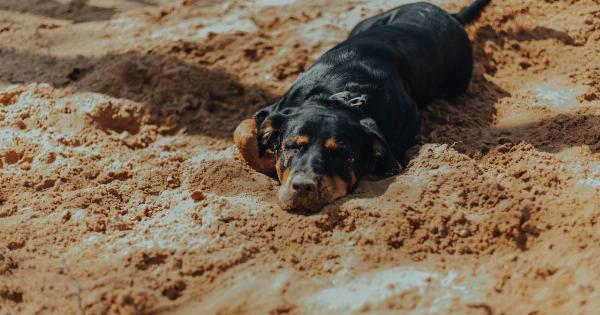Summer is a wonderful time to enjoy outdoor activities with your furry friend. However, with rising temperatures, it’s crucial to ensure your dog remains comfortable and safe in the heat.
Dogs are susceptible to heat-related illnesses, including dehydration and heatstroke. By following a few simple guidelines, you can help keep your beloved pet cool and happy during the sweltering summer months. Here are some essential tips to ensure your dog’s well-being:.
1. Hydration is Key
Proper hydration is paramount during hot weather. Dogs need access to fresh, clean water at all times, both indoors and outdoors. Make sure your dog’s water bowl is always filled and check it regularly to ensure it hasn’t run dry.
Consider placing multiple water bowls in various locations to make it convenient for your dog to hydrate when needed.
2. Never Leave Your Dog in a Hot Car
Leaving your dog in a parked car, even for a few minutes, can be life-threatening. On a hot day, the temperature inside a car can skyrocket within minutes, even with the windows cracked.
Dogs do not regulate their body temperature as efficiently as humans do, and they are more prone to heat exhaustion and heatstroke. Avoid potential tragedy by leaving your dog at home if you need to run errands.
3. Stick to Cool Walks
During the summer, it’s important to be mindful of the temperature when taking your dog for a walk. The pavement can become scorching hot and burn your dog’s paw pads, leading to pain and discomfort.
Before heading out, check the temperature of the pavement by placing the back of your hand on it for a few seconds. If it’s too hot for your hand, it’s too hot for your dog’s paws. Opt for early morning or late evening walks when the ground is cooler.
4. Provide Ample Shade
When spending time outdoors, ensure your dog has access to shaded areas. Set up a canopy or utilize a well-placed tree to offer protection from the sun’s direct rays. Dogs can quickly overheat when exposed to the sun for extended periods.
Remember, shade positions change throughout the day, so monitor your dog’s resting spot to ensure maximum protection from the sun at all times.
5. Consider Indoor Activities
If the weather becomes too hot for outdoor activities, engage your dog with indoor games and exercises. Hide treats around the house for your dog to find, play tug-of-war, or teach them new tricks.
These mental and physical exercises not only keep your dog entertained but also tire them out, helping them relax during the hottest parts of the day.
6. Use Cooling Products
There are various cooling products available that can help your dog beat the heat. Water-filled cooling mats or vests provide an excellent way to regulate your dog’s body temperature.
Additionally, you can use cooling bandanas or damp towels to keep them cool during outdoor excursions. These products often utilize evaporative technology to provide a cooling effect, enhancing your dog’s comfort in warm weather.
7. Adjust Exercise Routine
Dogs still need exercise, even in the summer, but it’s important to adjust their routine accordingly. Plan walks or playtime during the cooler hours of the day, such as early morning or late evening.
Keep exercise sessions shorter to prevent overexertion and ensure your dog has plenty of water breaks. Monitor for any signs of exhaustion, such as excessive panting or lethargy, and allow your dog to rest when needed.
8. Be Mindful of Sunburn
Just like humans, dogs can also get sunburned. Light-colored and thinly coated dogs are particularly susceptible to sunburn, especially on their ears, nose, and other exposed areas.
Consider applying a pet-friendly sunscreen specifically formulated for dogs when spending prolonged periods in the sun. Remember, if it’s too hot for your bare feet on pavement, it’s too hot for your dog to walk on without protection.
9. Watch for Signs of Overheating
It’s crucial to be aware of the signs of overheating in dogs. Heavy panting, excessive drooling, lethargy, rapid heartbeat, glazed eyes, and vomiting are some common symptoms of heat-related stress.
If you notice these signs, immediately move your dog to a cooler area, offer them water, and wet their paw pads with cool (not cold) water. Contact your veterinarian if their condition does not improve promptly.
10. Consult Your Veterinarian
Lastly, always consult your veterinarian for specific advice and tips tailored to your dog’s breed, age, and overall health.
Your vet will be able to provide you with personalized guidance, including appropriate exercise routines, suitable cooling products, and any breed-specific precautions you should take during the summer months.
Conclusion
By following these essential summer safety tips, you can ensure your dog remains comfortable, happy, and healthy throughout the hot season.
Remember, dogs rely on their owners to keep them safe and provide for their well-being, especially in extreme weather conditions. So, be proactive, vigilant, and make your dog’s summer experience a wonderful and refreshing one!.






























